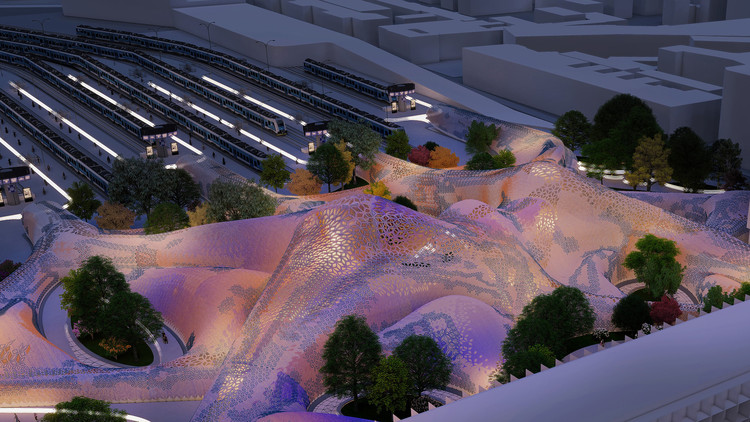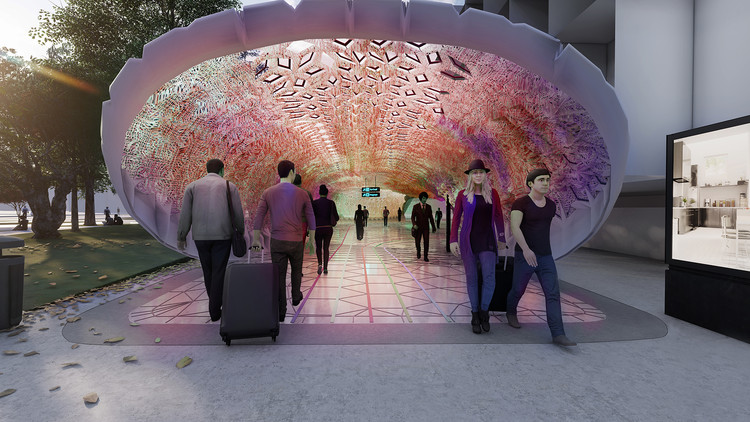
The roof of Euston Station in London is the large-scale architectural setting for the virtual application of the comprehensive Metaplas system, created by students from the Bartlett School of Architecture, UCL. As part of an investigation carried out in Research Cluster 8 (RC8) of the Master's program in Architectural Design, students developed a 3D printed multimaterial system from biodegradable and recyclable thermoplastics. Transforming a series of flat panels into complex three-dimensional forms, students created a structural system with geometric folds that allows for passive control of the lighting of interior spaces.




Contemporary design and construction methods often lack a model for unifying design, materiality, structural requirements, and fabrication through digital tools. Responding to this lack, Metaplas is the result of the search to achieve an integral architectural system through digitization. In addition, the system can be manufactured in an environmentally friendly and ethical way, and may offer economic benefits as well. For example, in the case of Euston Station, recycling and 3D printing facilities located within a defined radius from the site were mapped and identified to promote the development of the local economy.

From extensive research on materials for 3D printing, Bartlett School of Architecture students identified two potential recyclable thermoplastics—rigid PLA (polylactic acid) and flexible filament TPU (thermoplastic polyurethane)—optimal for achieving a multi-material folding panel. The panel is 3D printed flat and turned into a three-dimensional object through an integrated system of patterns. The panel folds, which make up the structure, are secured by a cable system and a clip closure mechanism, which facilitates assembly, disassembly, and maintenance. According to the team, "bending was enhanced as a geometric tool through a custom process, which involves structural analysis prior to bending. Areas that require more structure are the densest in bends, while areas that are inherently structural are scarcer."


Likewise, the integration of thermochromic plastics is proposed through a micro pattern embedded in each panel. This type of plastic stands out for its pigmentation, which allows the material to change color as the temperature changes. Its application achieves passive control over the lighting of interior spaces, improving environmental comfort and also generating a sense of directionality in the space.


In addition to the multiple environmental, technological, and economic benefits, the Metaplas system is presented as an interesting reference for how a structural system can be effective from a micro-scale to a macro-scale, demonstrating that the strength and flexibility of the structure does not depend on size.
Check out more details of the project here.




